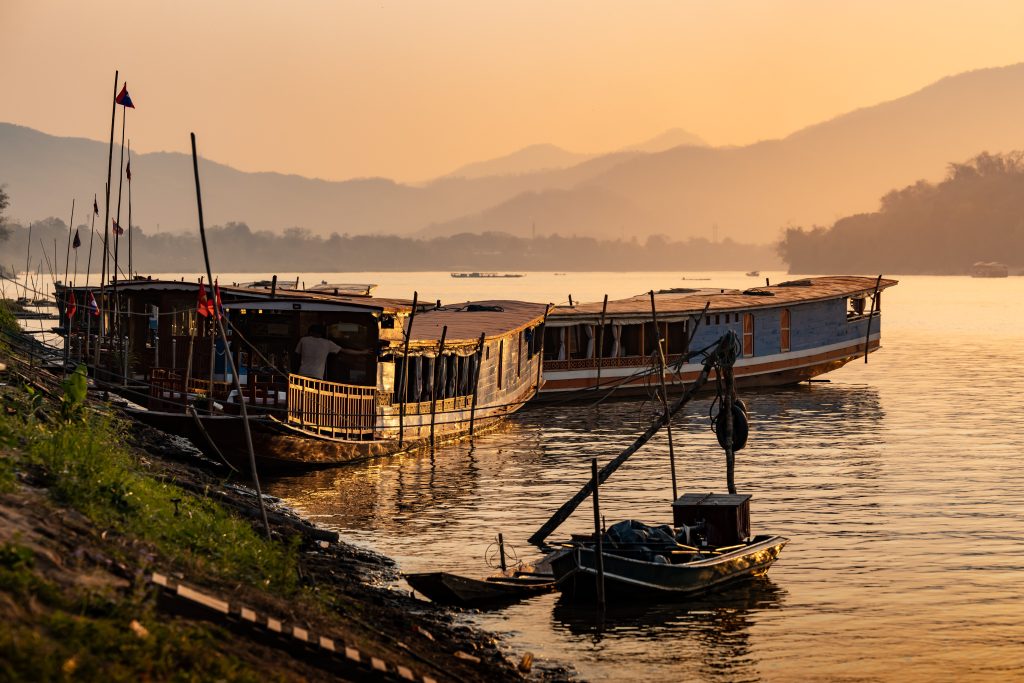How many days does the trip take? Can you sleep on board the slow boat? The questions were lined up before boarding a boat on the Mekong River. Here we talk about our journey with slow boat – and below we have collected answers to the things we ourselves would have liked to know beforehand.
Written by Mette / Photo by Martin
Translated from Danish
“Look, it’s the border between Thailand and Laos”. I point to the ripple that appears in the wake of the boat, which looks like a white line in the muddy brown water. It’s an old joke, my father always tried to tell me and my sister when we were sailing on the ferry from Denmark to Germany as children.
For good reasons, Martin does not accept the somewhat dubious claim. But precisely here it has perhaps never been truer. We have just set out from Huay Xai, a small river town in Laos, and on the opposite side of the Mekong River lies Northern Thailand. With a cruising speed of approx. 20-25 km/h we should reach the shores of Luang Prabang, Laos’ old royal city in two days.
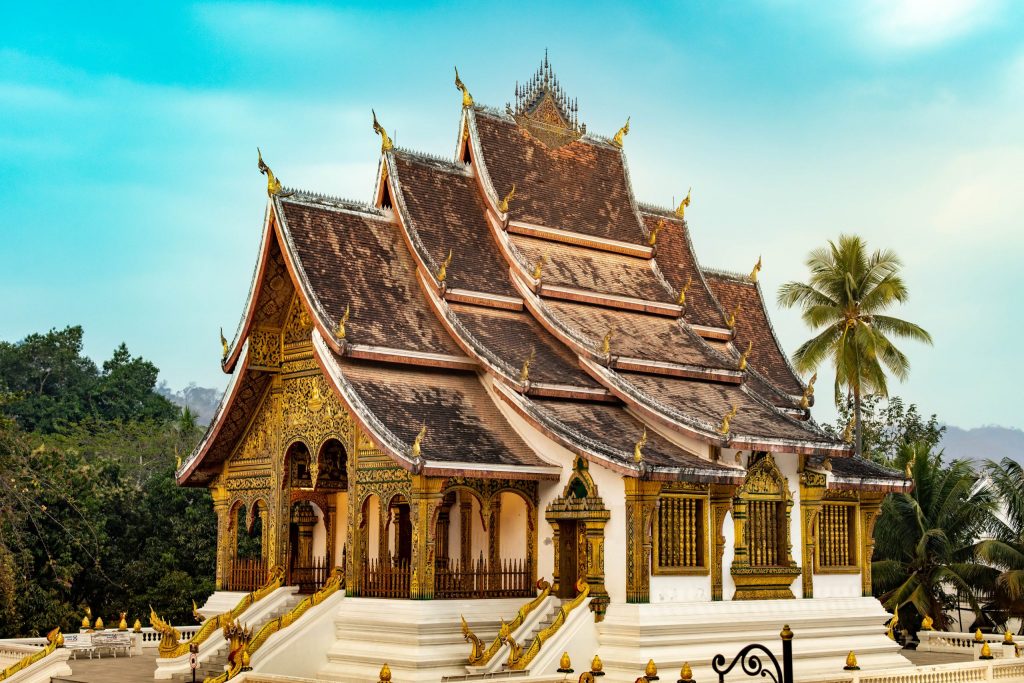
A famous and infamous boat
With its green wooden trim, square prow, and fluttering curtains in the open windows, the slow boat doesn’t resemble others we have seen in Southeast Asia. The bow is covered with plants in large pots, and a wooden bench, which seems to be the best vantage point.
“The slow boat looks like an elongated allotment house.”
The 40-meter-long vessel is a traditional slow boat – a flat-bottomed and motor-driven wooden boat created for river sailing. In fact, we don’t have to go back many years before the slow boats were the primary way to get around Laos’ rugged landscape, notorious for carrying more things than just people.
At that time, the Mekong River was a central transport route in the Golden Triangle, which until the 90s was one of the world’s largest areas for the illegal production and trade of opium. Today, the purpose of the riverboats is purely peaceful, and the cruise is a popular part of many travelers’ itineraries when going from Northern Thailand to Laos.
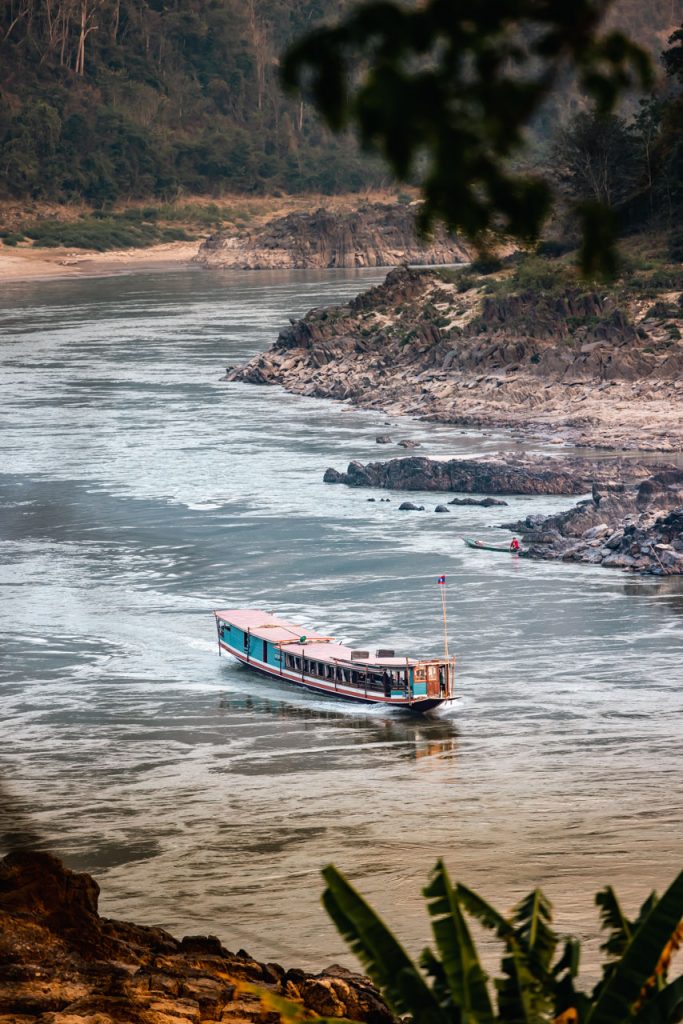
Two types of slow boats
Compared to the public slow boats, which in high season can be packed with 100-150 backpackers, locals, and various goods, our boat is a little different. We have bought seats on board a cruise, where the boat is furnished with spacious booths, daybeds, and has a limited number of seats.
It is anything but cramped here. We are only 24 passengers on board, and we feel fortunate that we decided to pay a little extra for that luxury. In the kitchen, the chef is already preparing simmering pots of food, that bode well for today’s lunch buffet, and along the way, the boat will dock in a few places so that we can experience a bit of life along the Mekong River.
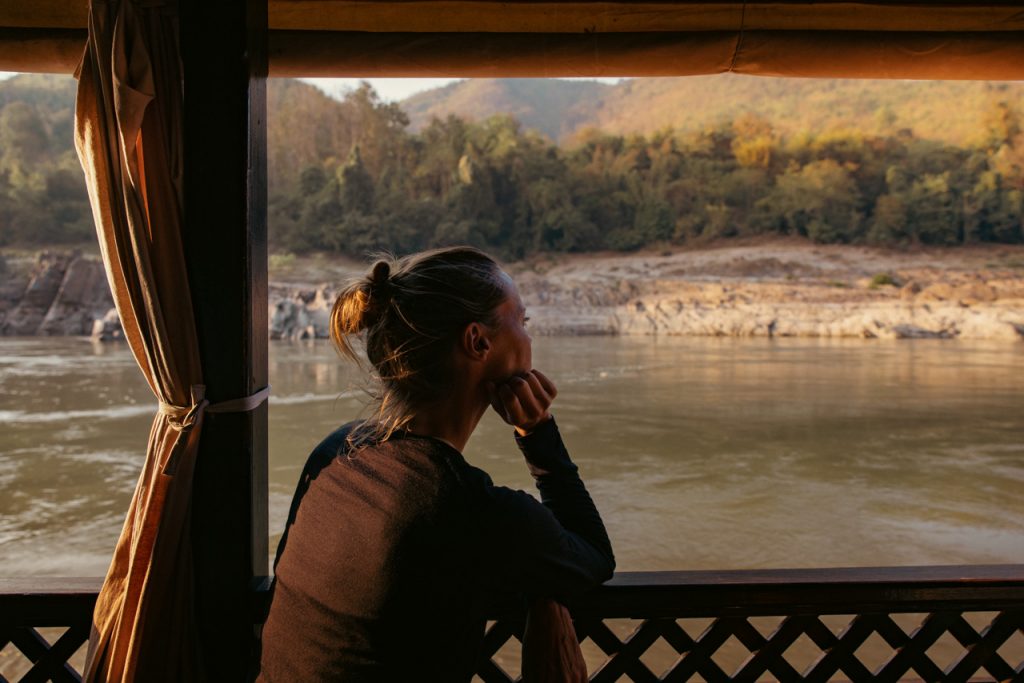
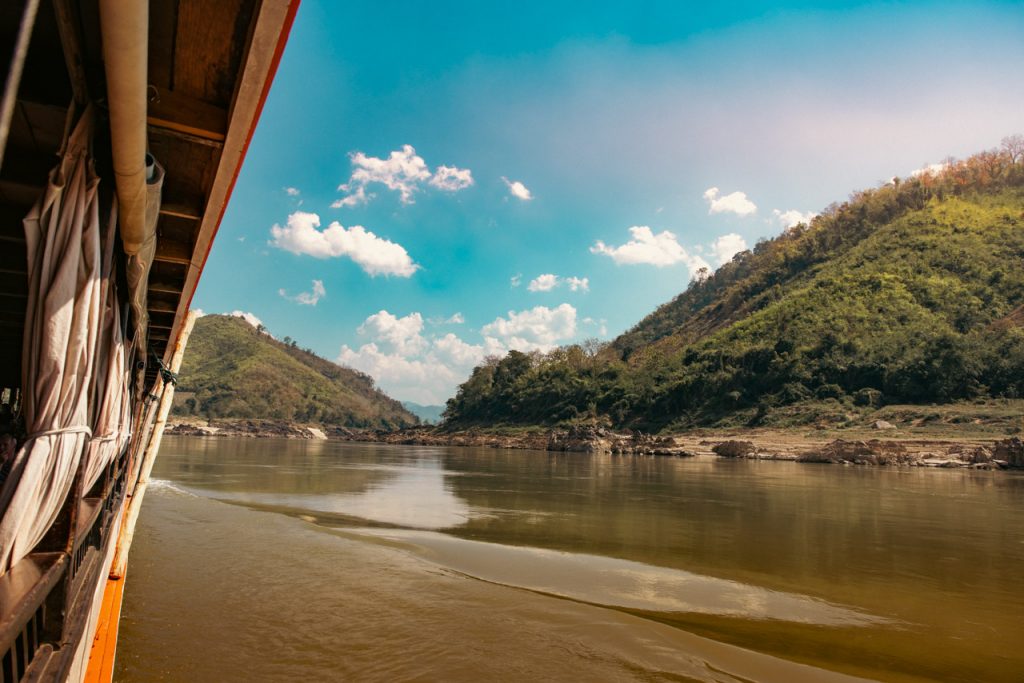
Day 1 – from Huay Xai to Pakbeng
“Damn it!” Martin and I laugh at our desperate attempts to remember the basic maritime terms. We have been sailing for an hour, and our local guide, Simon, has just announced that we no longer have Thailand on the right side of the boat. We also no longer have a mobile connection, so we can’t Google our way to the word starboard.
It is our first visit to Laos – and we are already taken by the passing surroundings. The open landscape on the border with Thailand is replaced by high, round, and jungle-clad mountains that are reflected in Southeast Asia’s longest river. At intervals, we see water buffalo, fishermen with nets, and small villages, and we wave back to the children playing at the river shore.
Although the Mekong River looks peaceful with its mirror-smooth surface, make no mistake. The muddy brown water hides massive rocks and treacherous rapids can easily push the elongated boat in a dangerous direction. However the captain makes it look easy, with calm hands on the steering wheel of an old car (yep, you read that correctly), he navigates the boat down the river.
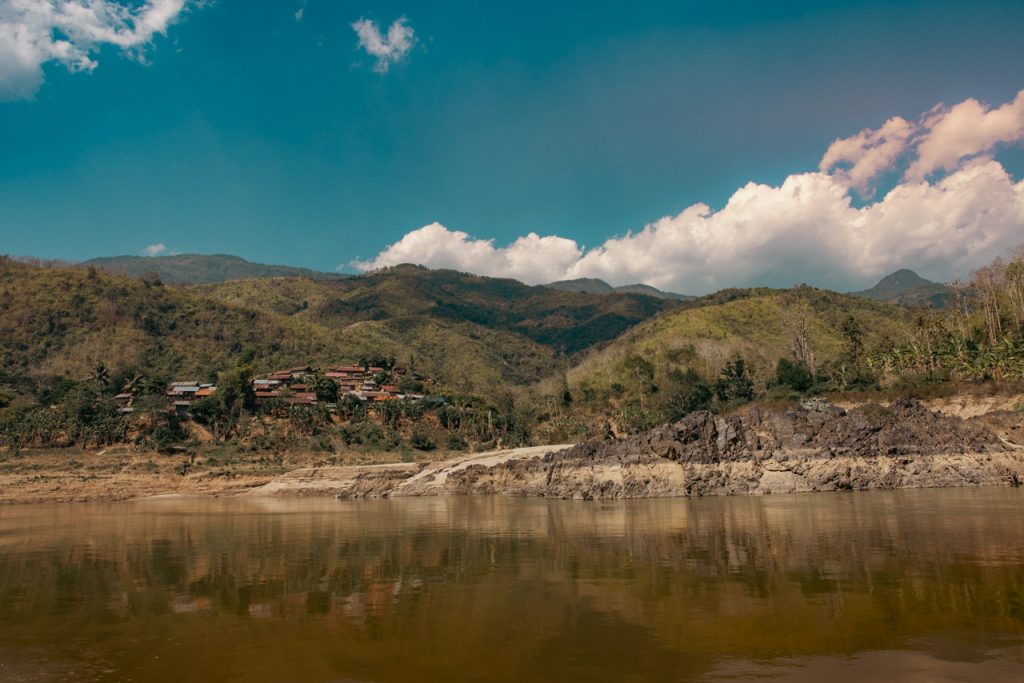
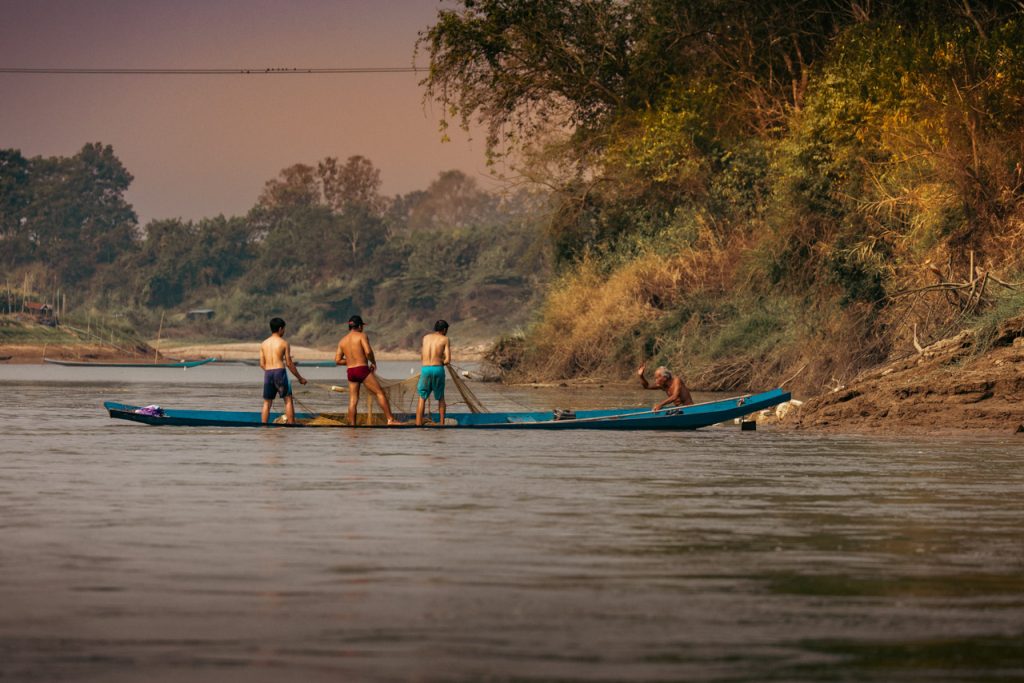
There is no formal training for captains of slow boats. It is a profession that is passed down from father to son, and the job is done with an intimate knowledge of every ripple on the river.
At the back end of the boat hangs a certificate in a glass frame, where we can see that our captain bears the Lao name of Singkham Soudachan. He doesn’t speak English, so our primary form of communication is the big smiles he generously offers every time we walk past his big car seat (yep, you read that correctly too) and into the bow.
Captain Singkham demonstrates his skills as he docks the boat at the river bank a little later in the day. In the middle of nowhere, the guide shows us up a steep gravel path that leads to a small village with wooden houses on stilts, free-roaming chickens, and old ladies watching the flock of tourists from their doorways.
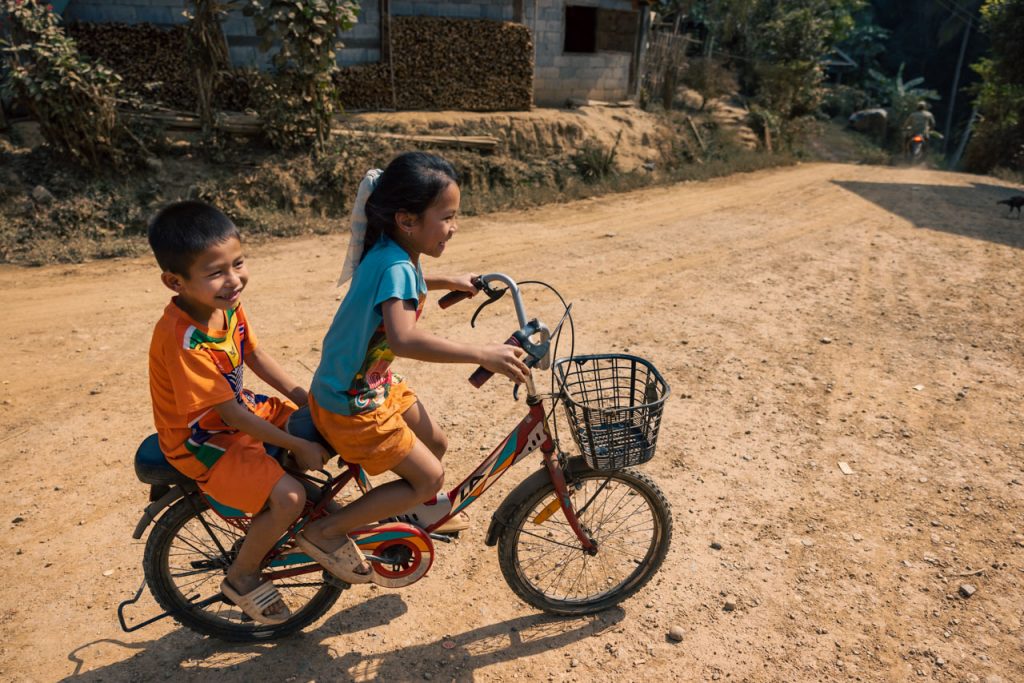
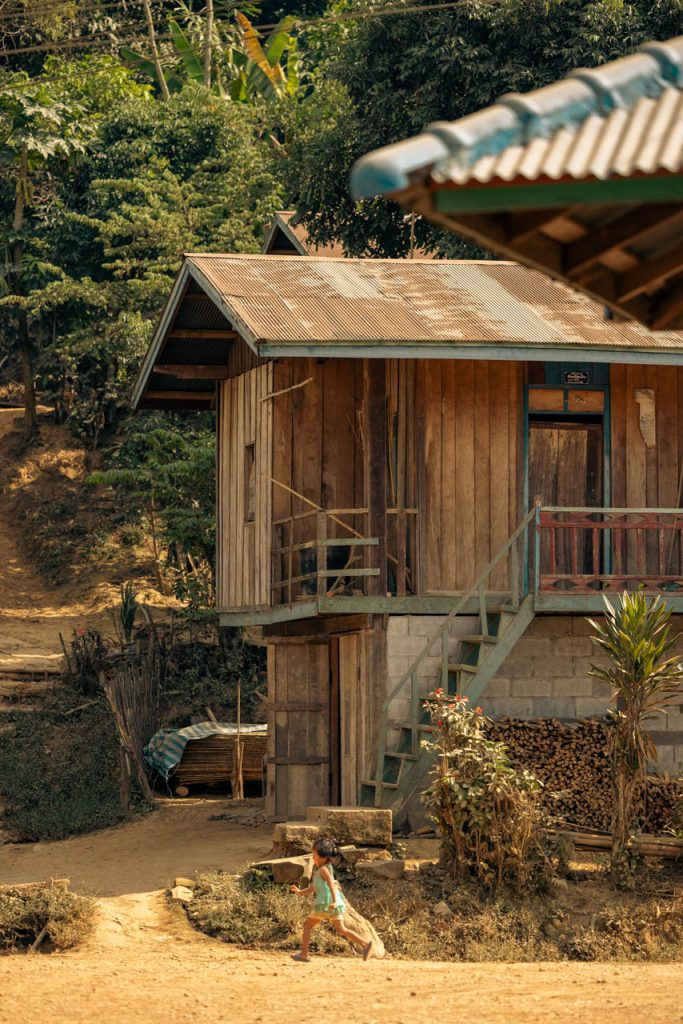
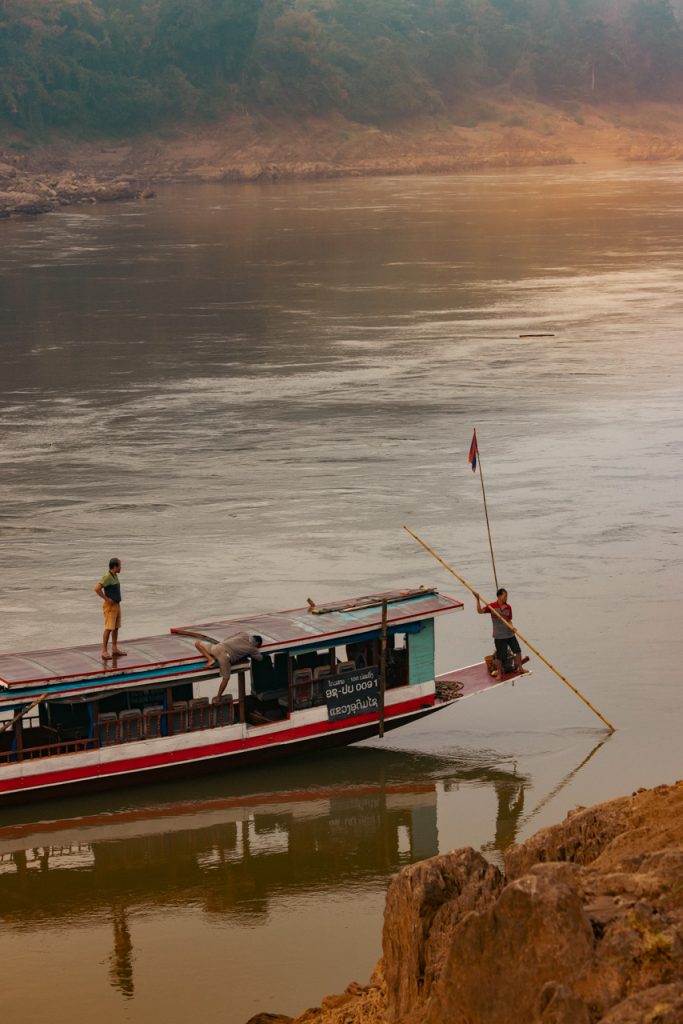
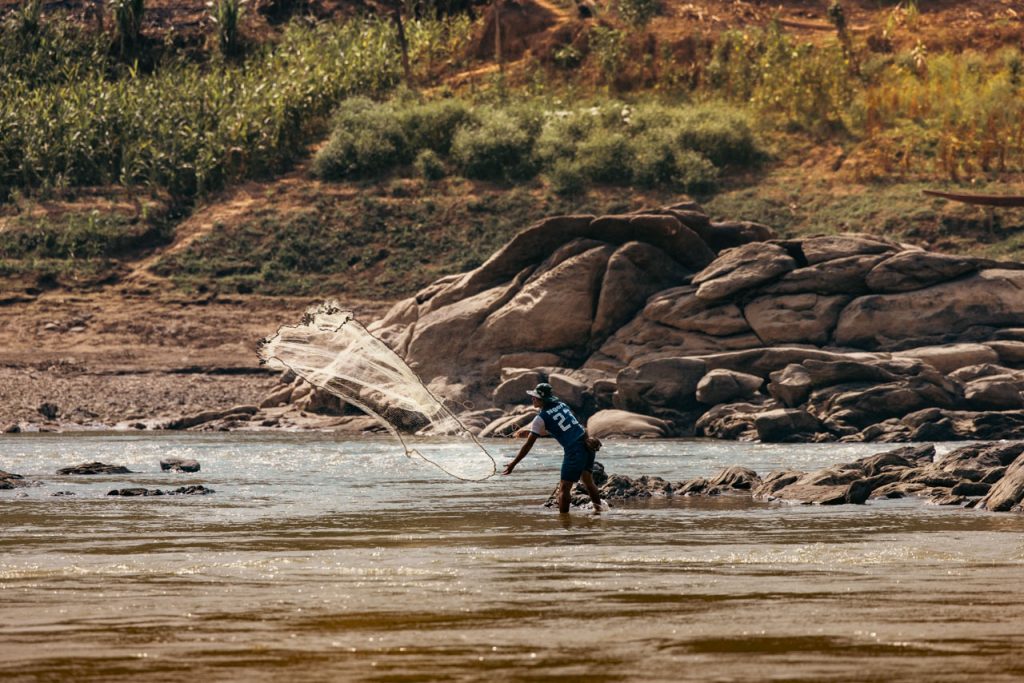
The village is inhabited by the Hmong tribe. The houses do not have running water, but a few years ago they got electricity, and the newest houses, built on a foundation of Leca stone, have TV satellites and clusters of wires on the wall.
In between the houses, the local kids are playing with a bicycle. At first, they appear shy, until they muster up the courage and finally laugh out loud every time we acknowledge their high fives.
“Life in the village seems very far away from Chiang Rai, which we left a little earlier this morning.”
It is also as if time works differently on board a slow boat. The hours replace each other imperceptibly with a hypnotic force, and it strangely feels as if the day has passed both quickly and slowly when we arrive in Pakbeng in the late afternoon. A small riverside town that mainly consists of small hotels, local eateries, and shops with souvenirs.
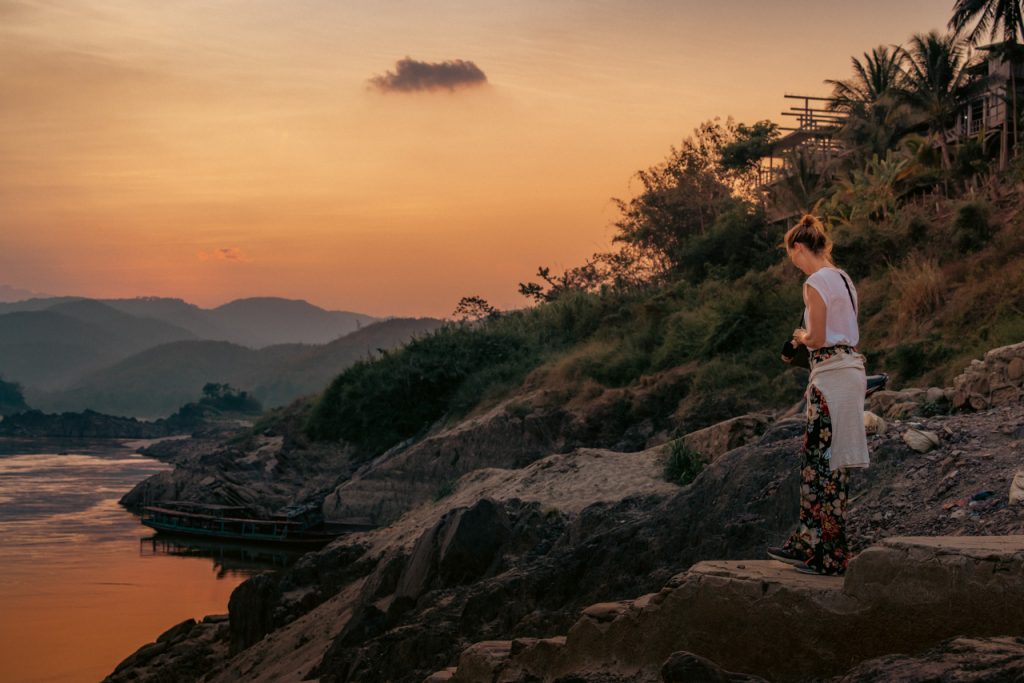
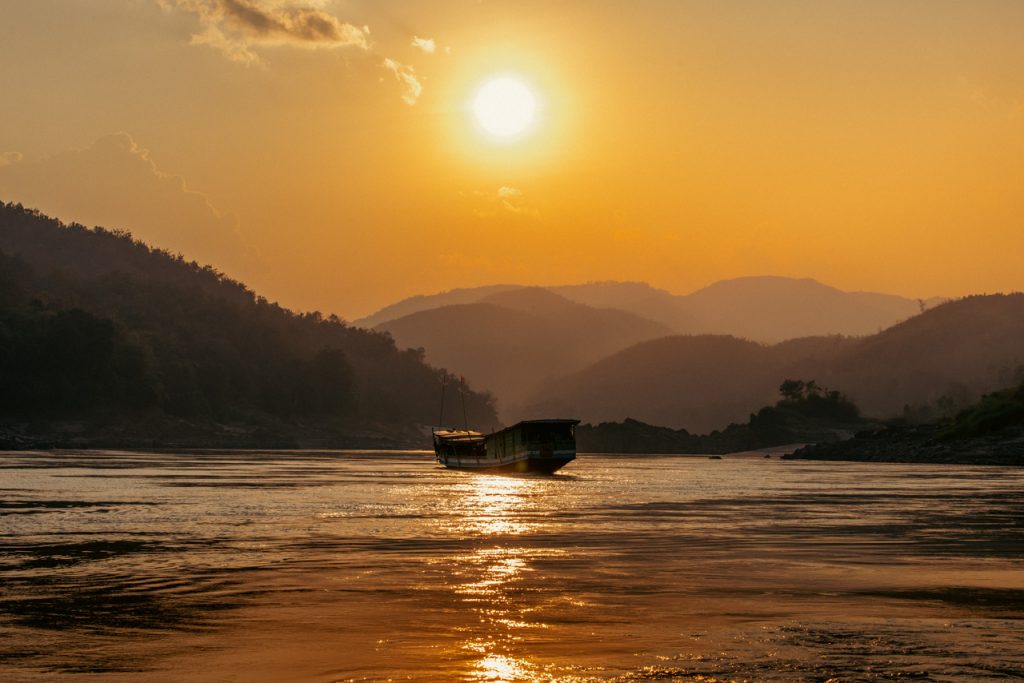
We only manage to throw our luggage at the hotel room bed before standing on the dock again to watch Laos glow with a radiant, deep red sunset. And right then and there we know that the sailing trip with a slow boat has been added to the list of our most unforgettable travel experiences.
“It is as if the slow pace of the tour makes even the smallest impressions much greater.”
In downtown Pakbeng, the main street has started to liven up a bit with today’s influx of travelers who arrived by slowboat. Pakbeng itself is not an attraction, but the little town has exactly what we need. A hot meal, a cold Beer Lao, and a good bed to sleep in.
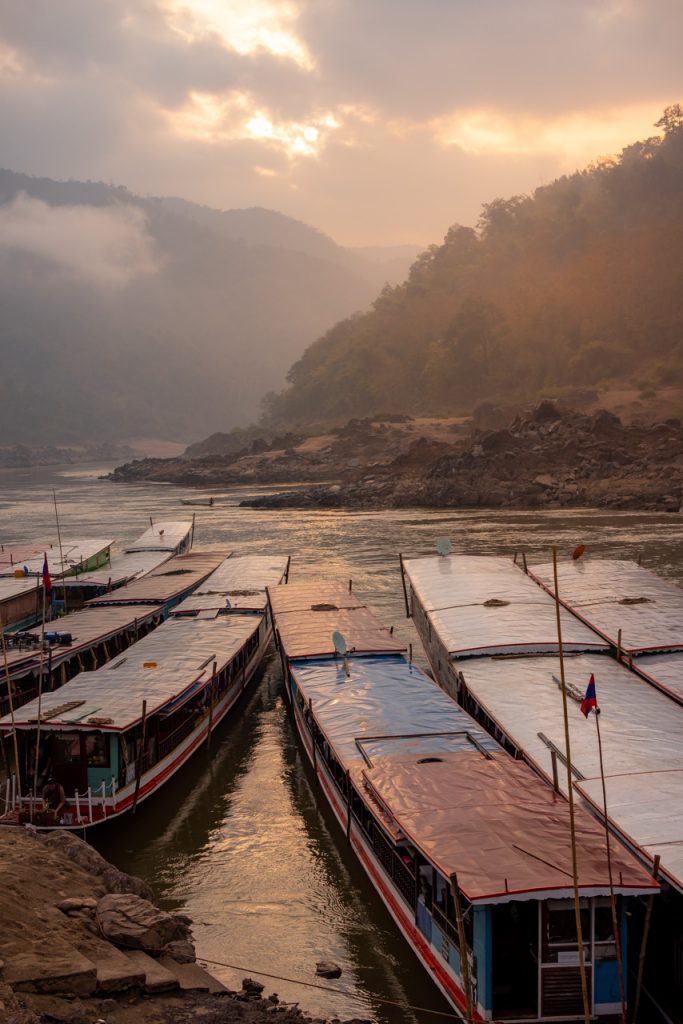
Day 2 – from Pakbeng to Luang Prabang
The air is fresh and a little chilly when we board the boat at eight o’clock and say good morning to the other passengers. People chat pleasantly across languages and ages, share impressions from yesterday’s experiences, and the joy of having a view of another slow day on the Mekong River.
“Wild elephants”, the English couple replies when we ask what they hope to see on today’s cruise. The man is almost a permanent interior out in the bow, where Martin and I discover the simple magic of sitting with our legs dangling over the edge. It feels like flying silently over the brown water.
Unfortunately, the wildest wildlife we’ll see is a bunch of monkeys – and a few dead animals. Cows and dogs plop lifelessly on the surface of the water and remind us that we are in the middle of nature, where life takes its visible course.
Here, the locals live in symbiosis with the river, which also functions as their fish tank, bathing water, main road, dustbin – and gold vein. Several times we observe locals sitting at the water’s edge, where they filter the river’s sandy bottom in search of tiny pieces of gold.
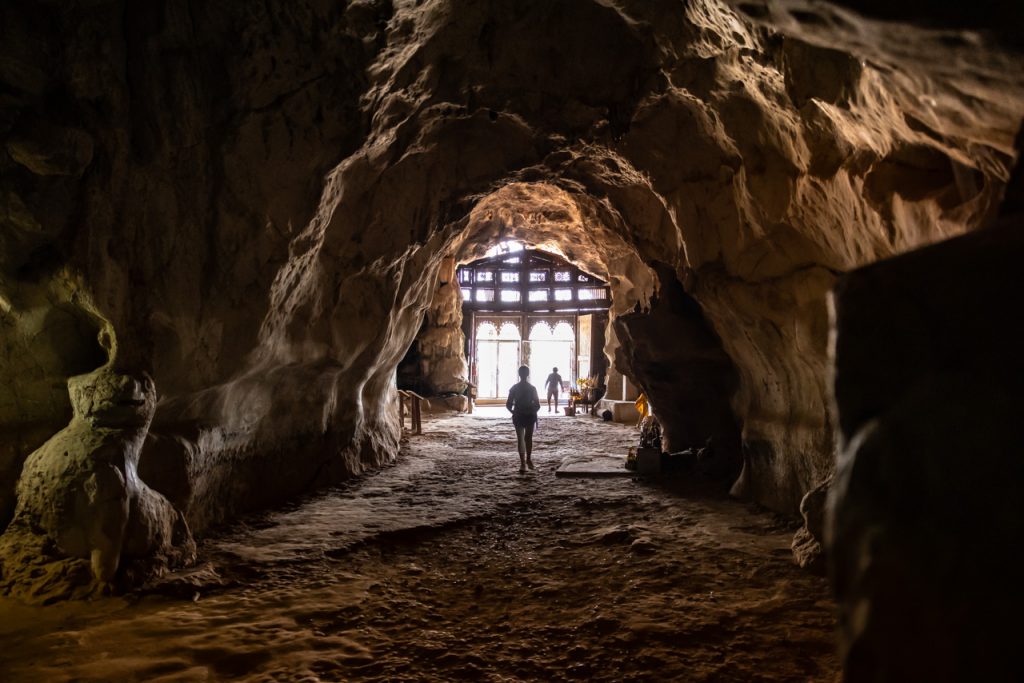
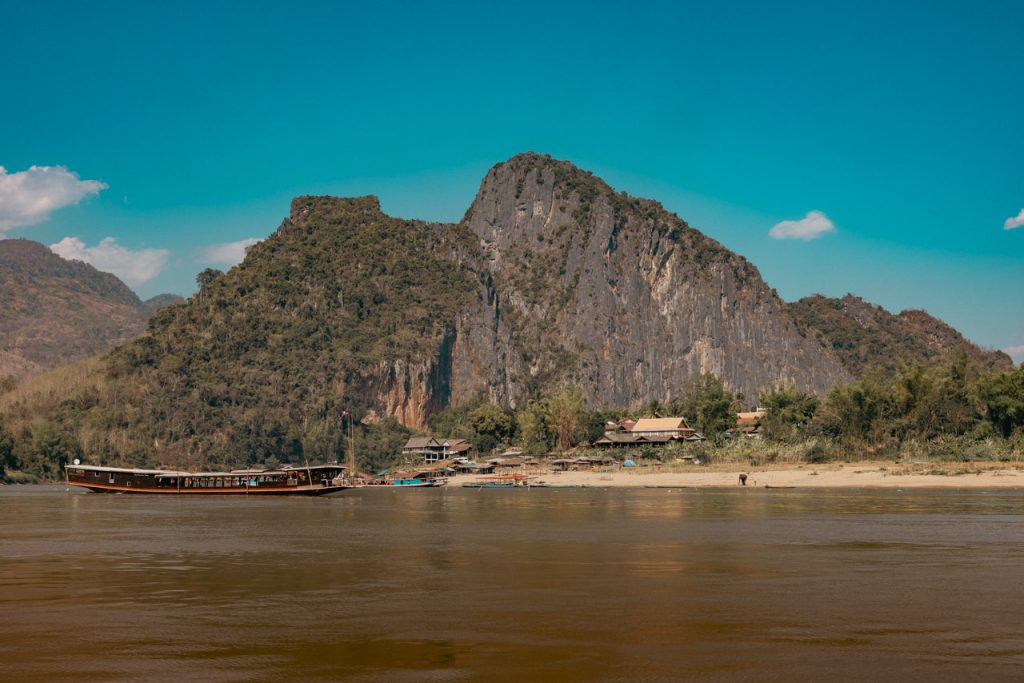
Hour after hour the riverboat glides through the endless landscape, and although the scenery doesn’t change much, it is impossible to get tired of it. Thus, seven hours have passed when the captain docks at the Pak Ou Caves, a temple cave filled with thousands of Buddha statues.
And a little further down the river, we stop at the village of Ban Xang Hai, where locals sell hand-woven scarves and brandy to the adventurous. In Laos, you go one step further from Mexico’s tequila worm. Here the bottles are seasoned with snakes and scorpions.
At 5 p.m. the captain docks the boat at our last stop. It is a bit sad that the journey is over. But at the same time, we are also looking forward to experiencing Luang Prabang, which we have dreamed of visiting for many years. And we couldn’t have dreamed of a better way to arrive. As the Danish adventurer, Jens Bjerre says so beautifully in his memoir:
“On long journeys, in my opinion, you should not fly. You have to sail so that you can have time to distance yourself from what you are traveling away from and make room for what you meet.”
– Jens Bjerre, Danish adventurer
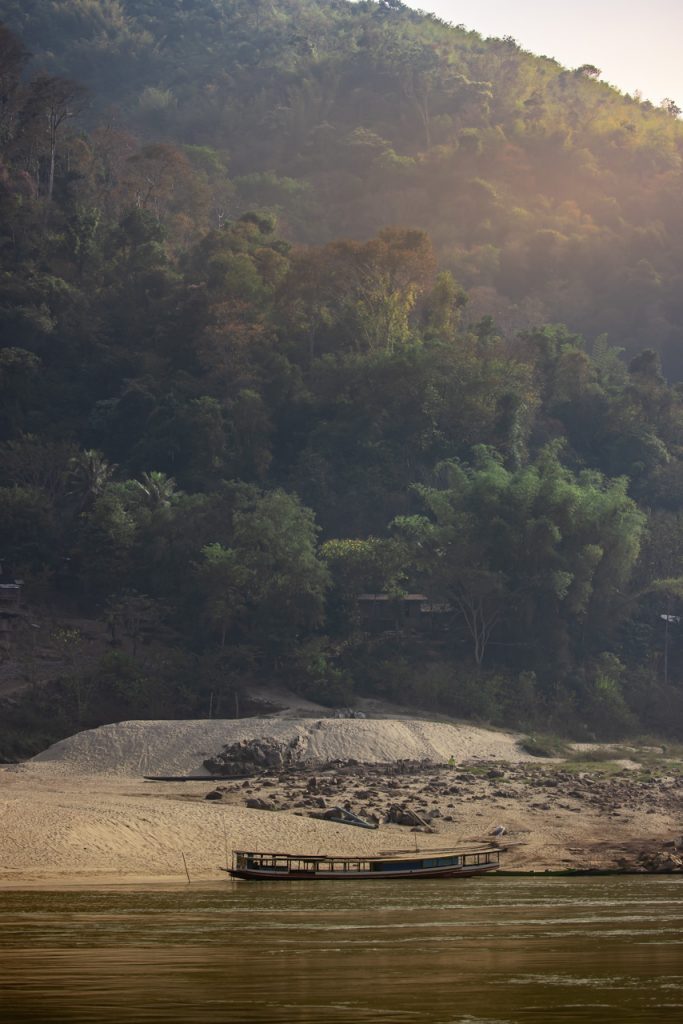
16 THINGS TO KNOW BEFORE
THE JOURNEY BY SLOW BOAT
#1 – How many days does the cruise take?
The sailing trip by slow boat takes two days. The time on board the boat varies according to the weather, the type of boat and the number of passengers.
#2 – What is the route?
You sail on the Mekong River all the way. From Huay Xai in Laos, located on the northern Thai border, to Luang Prabang in Laos. Or the other way around. Halfway through the route, you spend the night in Pakbeng, a small river town in Laos.
#3 – Can you buy a visa on the boat?
Geographically, the cruise begins and ends in Laos. So even if you come from Northern Thailand, you have your visa fixed before you board the boat. You can buy a regular tourist visa (Visa On Arrival) at the border between Laos and Thailand (see point #16).
You do not need to apply for a visa in advance. But remember to bring a passport photo, prepare money for a visa and always check the latest notice from the Ministry of Foreign Affairs about the rules before you leave.
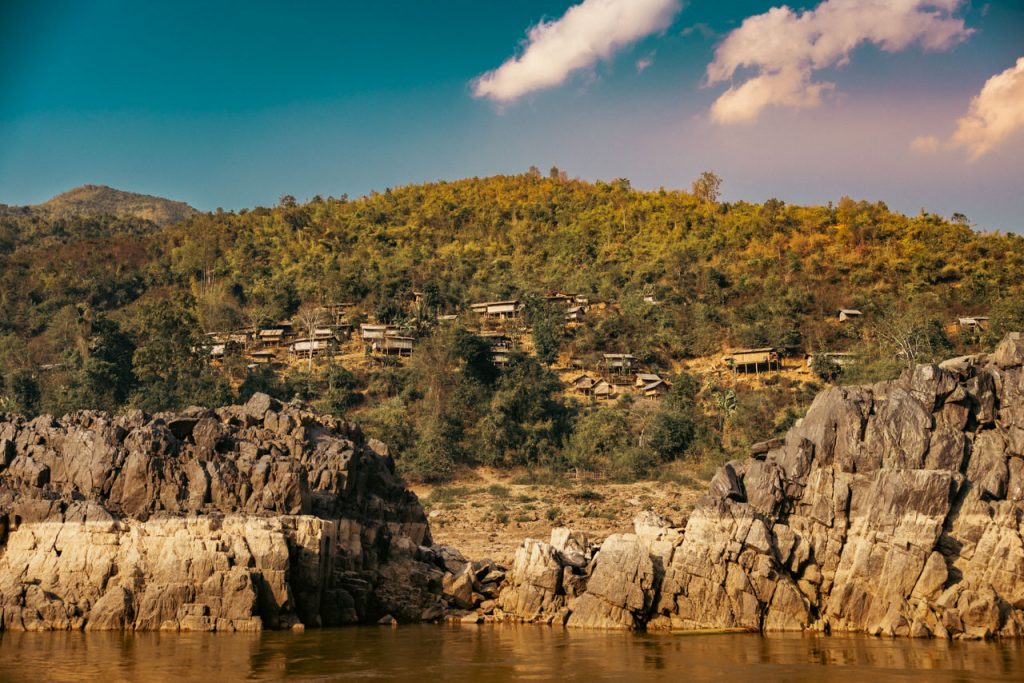
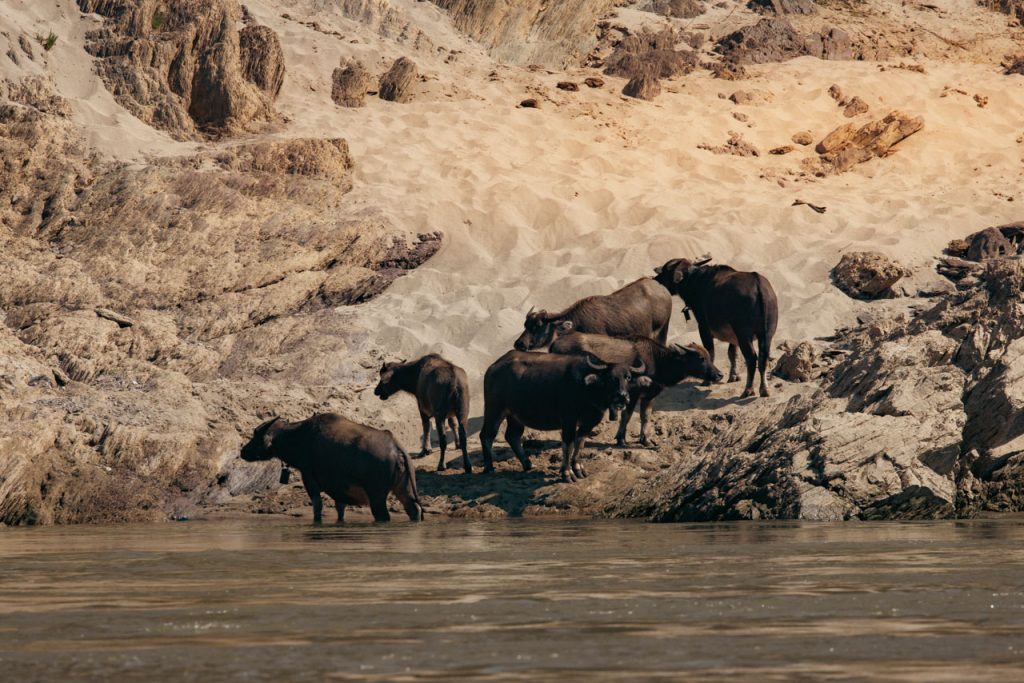
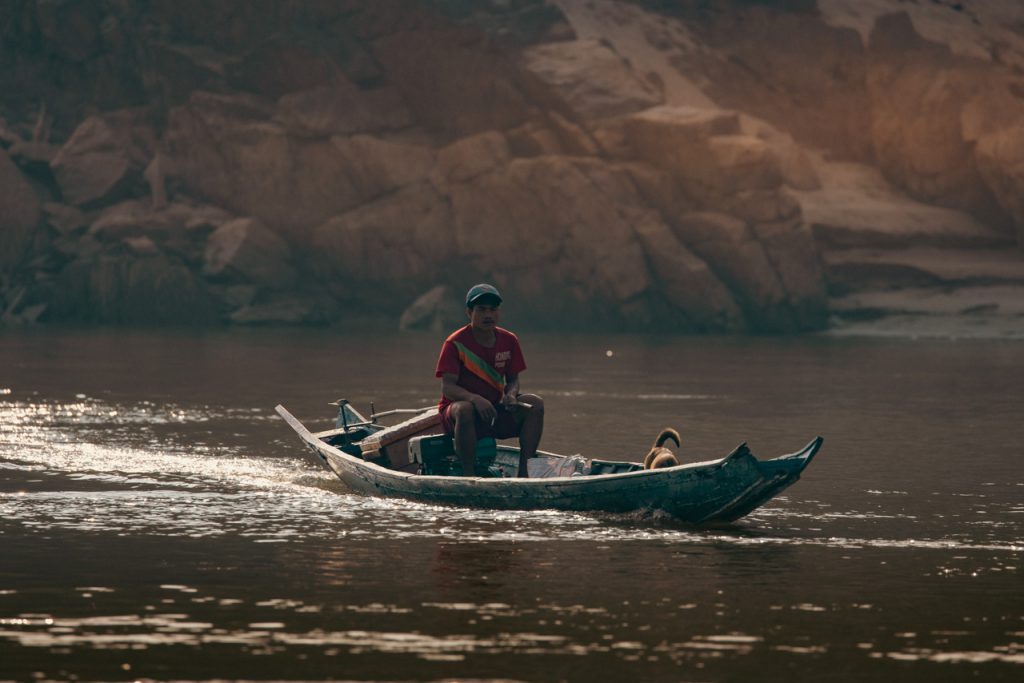
#4 – Which slow boat is best?
Overall, there are two different types of the classic slow boat and three price ranges.
1) The backpackers’ slow boat
The public slow boat is the cheapest, but also the most strenuous. Space can be tight, and the boat does not make any breaks where you can disembark during the day’s sailing trip. You cannot reserve seats or be sure to sit in the same place both days, as you often sail with one boat on the first day and another boat the next.
A good tip is to arrive early, as seats are allocated on a first-come, first-served basis. Aim for a seat at the front of the boat, furthest from the engine. You can risk that there are more passengers than seats, so you have to sit on the floor the whole way. But apart from that, the view is exactly the same as with the slightly more expensive package tours.
The ticket can be bought at the quay and costs approx. 12-18$. You must provide your own transport to Huay Xai + hotel in Pakbeng (read point #16). Several travelers tell of having met locals on the boat who try to offer tourists a hotel under the pretext that all hotels are sold out. It’s not true. It is both easy and cheaper to book yourself.
2) The package tour on a medium budget
If you would like to avoid some of the hassle, you can buy a package tour through a tour operator, for example in Chiang Mai or Chiang Rai. Then they provide transport to Huay Xai + ticket for the public slow boat. But you have to book a hotel in Pakbeng yourself. When we looked at prices from Chiang Rai, a package tour cost approx. 45$.
3) Cruise boats with experiences
If you would like to be guaranteed a good seat and experience a little more of Laos during the sailing trip, you can buy an upgraded package tour with one of the slightly more expensive slow boats. The cruise boats are similar to the public slow boats, but the interior are arranged differently. Here you are assigned a booth with a table and cushion-covered benches. In addition, only a limited number of tickets are sold, so there is always plenty of space on the boat.
During the sailing trip, the slow boat stops at a few places where you can experience tribal villages in the jungle, the temple cave Pak Ou, and small villages where the locals make all kinds of handicrafts. In addition, the tour is incl. transportation from hotel to hotel, overnight stay in Pakbeng, visa and border crossing assistance, lunch buffet, snacks, coffee/tea, and local guide. Prices start approx. from 150$ and depends on the choice of hotel.
Our journey by slow boat
We booked a place on a cruise boat, which we think was worth paying for. Because when we calculated what it would have cost if we had sailed with the public slow boat and in addition had to pay for lunch, excursions from Luang Prabang, transport, hotel, drinks, and snacks, the price was completely fair. We sailed with Nagi of Mekong which was a good experience. Others have also recommended Shompoo Cruise.
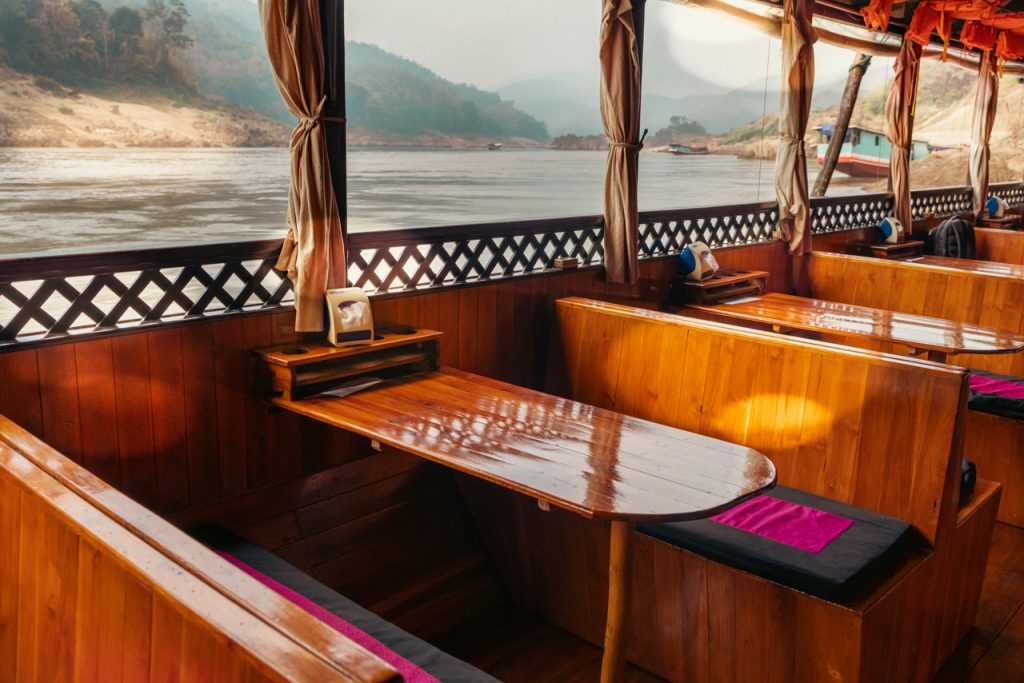
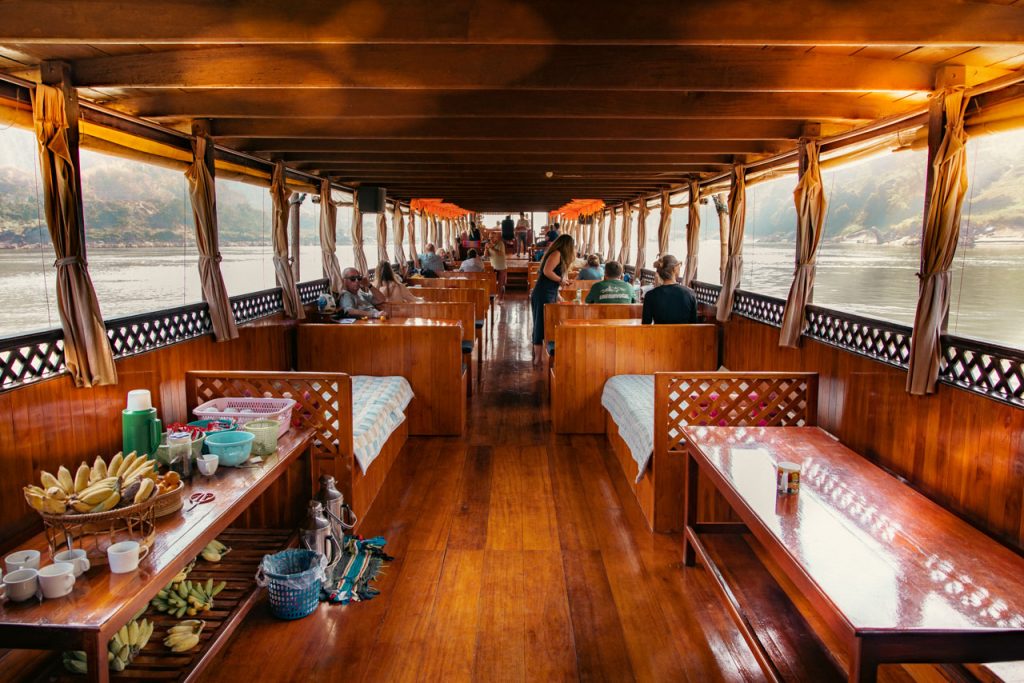
#5 – Can you buy tickets on the same day?
Yes, you can always come with a public slow boat and buy a ticket on the same day at the dock. If you would like to sail on a cruise boat, it is a good idea to buy a ticket in advance, as there is a limited number of places.
#6 – How many hours do you sail?
The first day we sailed for 6 hours (10am-5pm), where we had a single stop at a small village in Laos. The next day we sailed for 8 hours (8am-5pm) and stopped at two places, approx. an hour’s sail from Luang Prabang. Here we visited the Pak Ou Caves and the village of Ban Xang Hai, where the locals sell handicrafts and home brews. The sailing time itself is roughly the same with the public slow boat.
#7 – Upstream or downstream?
Most people choose to sail by slow boat from the border of Thailand to Laos – i.e. downstream Mekong River. If you are traveling in high season, there may be an advantage in terms of space by traveling the other way. In any case, we only saw slow boats with very few or no passengers sailing from Laos to the border Thailand (upstream).
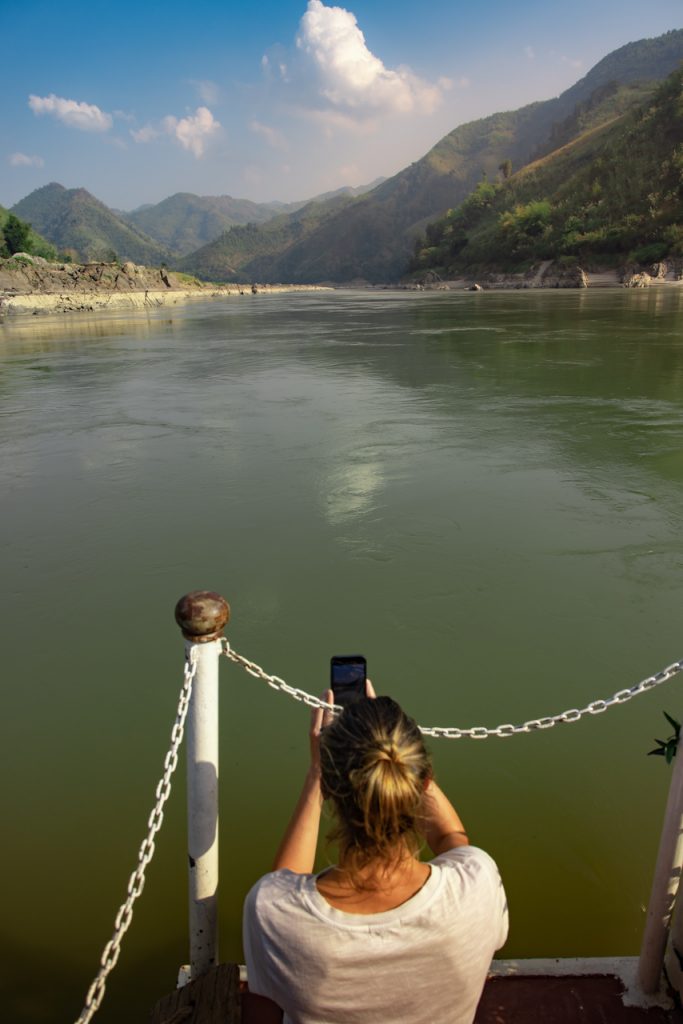
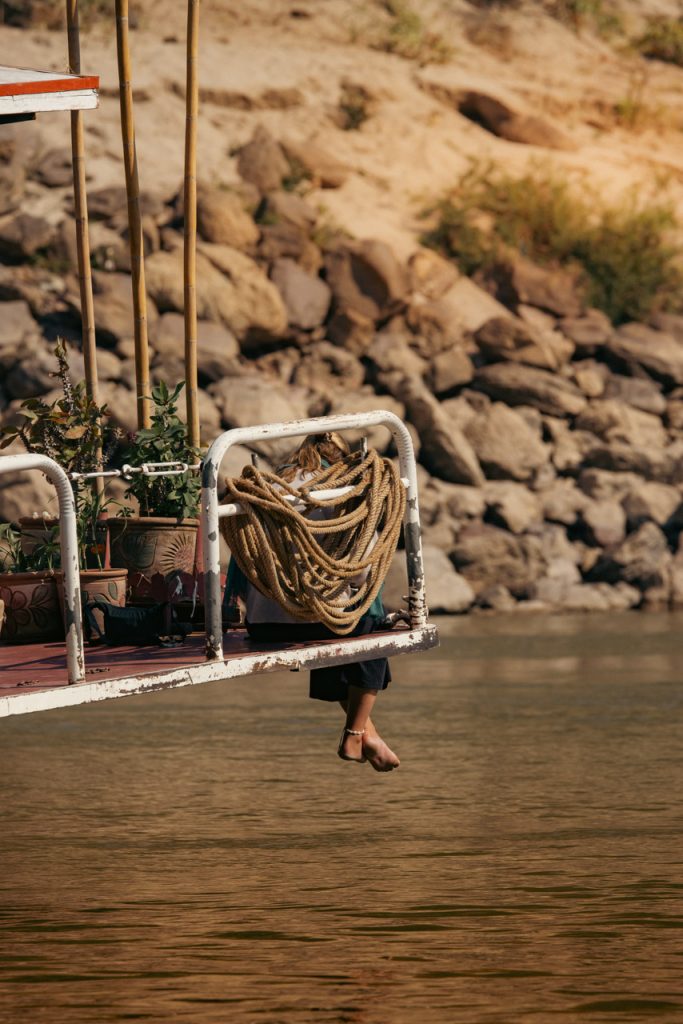
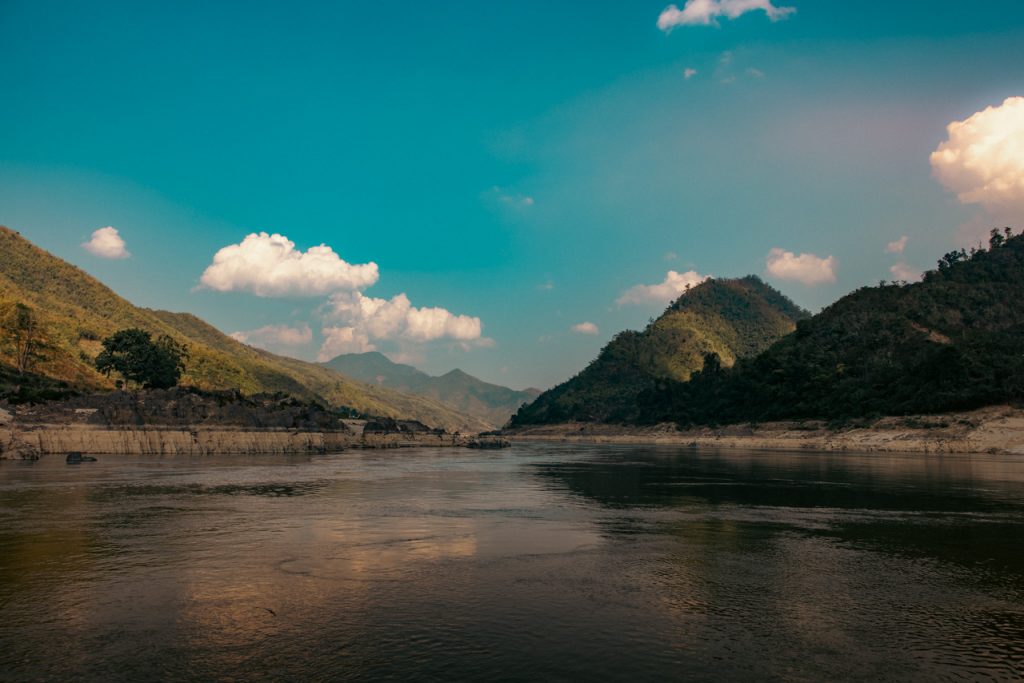
#8 – Overnight in Pakbeng
Whichever type of slow boat you choose, it docks at Pakbeng. It’s a small, sleepy town that seems to exist only for people to have a place to sleep halfway through the cruise. Along the riverbank are small hotels in several price ranges, as well as local restaurants and shops that cover the most basic needs.
#9 – Can you sleep on board the slow boat?
No, when sailing with slow boat you stay overnight in the town of Pakbeng. If you would like to go on a river cruise where you stay on the boat, you can check out e.g. Mekong River Cruise or Top Mekong River Cruises. Here you sail for several days on the Mekong River and sleep in cabins. However, it is a completely different type of boat, form of travel, and price range than the traditional slow boat.
#10 – Snacks on the boat
The boats usually sell a small selection of chips, cup noodles, and drinks – e.g. water, soft drinks, coffee, beer, and wine. But it is a good idea to bring some water, as it may sell out and prices are slightly higher on board the boat. Also remember lunch if you travel with the public slow boat.
#11 – Remember hand luggage
Your luggage will be stored on the boat. But it can very easily get buried under the crowd of others. Therefore, pack a small bag so that you have a few practical things at hand, e.g. sunscreen, entertainment, toilet paper, and a jacket or blouse, as the temperature is cool at the beginning and end of the day.
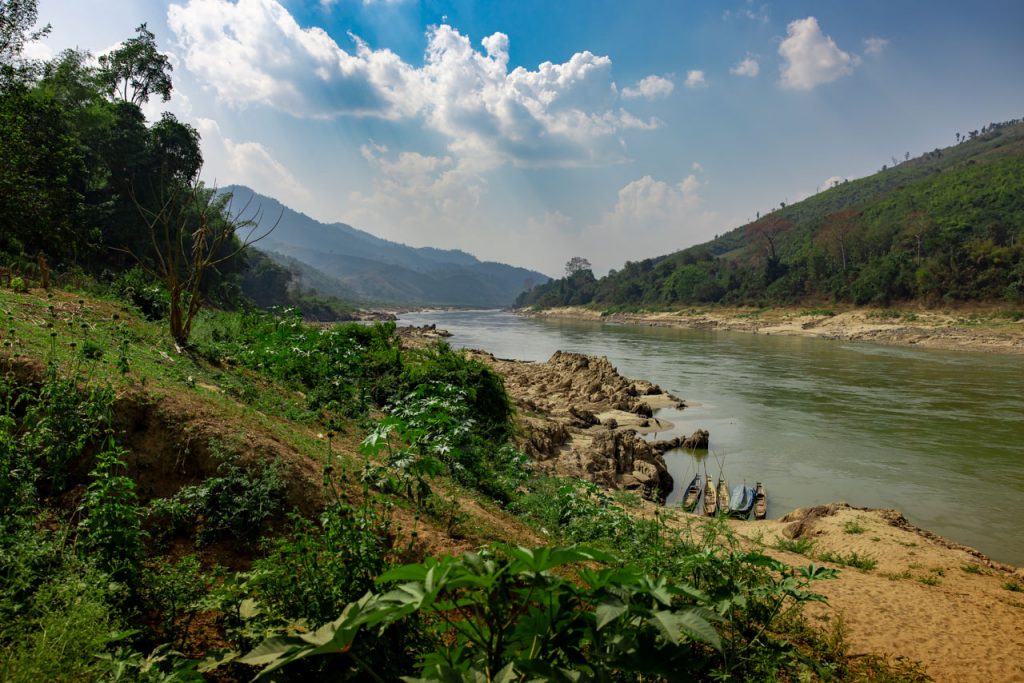
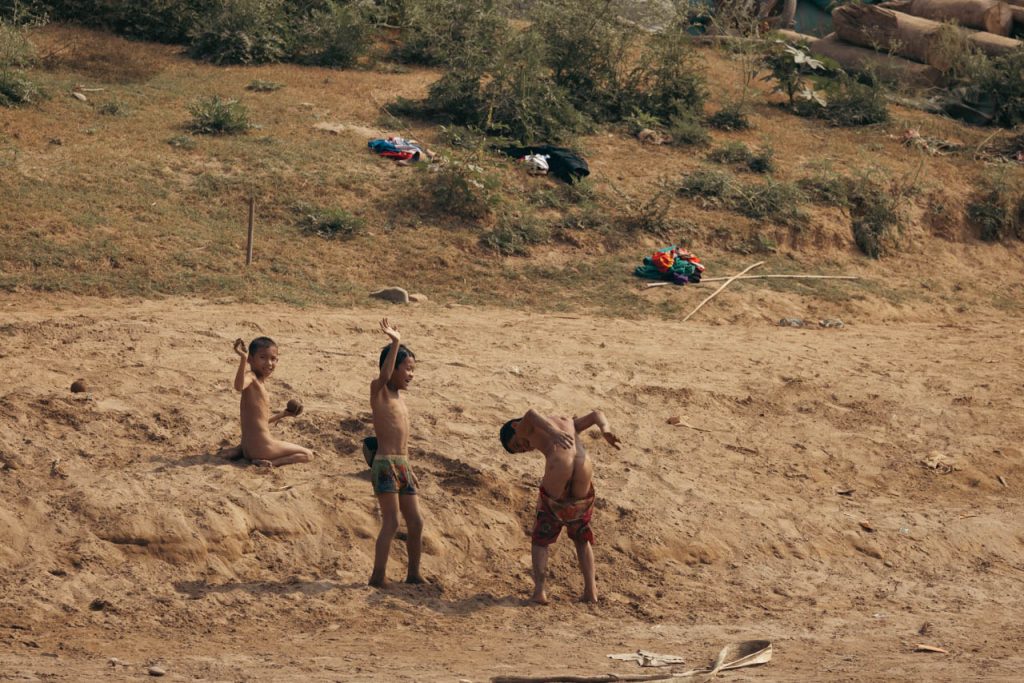
#12 – Is there a toilet on board?
Yes, our slow boat had a nice and clean drag-and-drop toilet. It was even fitted with a porthole so that you didn’t miss the view when you stepped aside. There is also a toilet on the public slow boat, but the standard appears to be of a slightly more fluctuating nature. Remember to bring toilet paper and hand sanitizer.
#13 – Are sea sickness pills necessary?
No, the boat glides slowly and steadily on the Mekong River, so you really have to be a serious landlubber to get uncomfortable. Mette gets seasick easily and felt absolutely nothing.
#14 – Wifi on the boat
Although it is possible to buy SIM-cards in Huay Xai (we could also buy from our guide on the boat), we cannot recommend it. However, the internet connection is fluctuating on the cruise and you can buy it at a better price in Luang Prabang. Better enjoy the trip offline.
#15 – Best time to sail by slow boat
The most beautiful time is just after the rainy season (around mid-October), when the Mekong is full of water and the landscape is most lush. High season is from November to February, when it rarely rains. From February, the so-called ‘burning season’ begins, where the farmers burn off the dry fields. During March-April, the smoke increases and settles like a fog over the landscape.
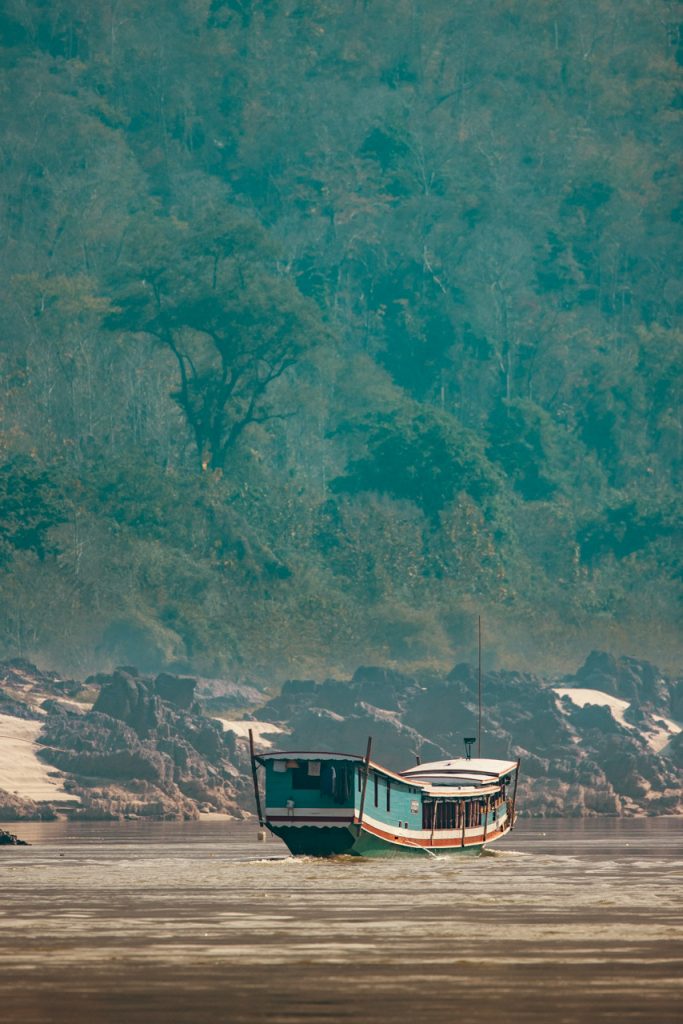
#16 – Itinerary from Chiang Rai to Huay Xai
Many people start their journey from Thailand to Laos starting in Chiang Rai. If you want to save money, it is possible to arrange your own transport between Chiang Rai in Thailand and Huay Xai in Laos, from where the public boat leaves for Luang Prabang.
Although taking the journey on your own is extra time-consuming, it is not complicated. Here we have outlined the itinerary in rough outline:
- Take the bus from Chiang Rai to Chiang Khong, located on the Mekong River and marking the border between Thailand and Laos. The bus runs every hour and the transport time is approx. 2 hours. Remember that you are not going to Chiang Khong city, but to Chiang Khong Checkpoint, which is the border crossing and is a little outside the city itself.
- Cross the border via the friendship bridge connecting Thailand/Chiang Khong and Laos/Huay Xai. You can take the public bus that shuttles between the two countries’ Checkpoints, located on either side of the friendship bridge.
- At Thailand’s Checkpoint, you must hand in your Departure card and have an exit stamp in your passport from the border police. In Laos you must buy a visa (Visa On Arrival). Remember to have money ready for visa + passport photo.
- If you want to be sure of reaching the public slow boat when it leaves Huay Xai in the morning, it is a good idea to set aside time for an overnight stay in either Chiang Khong or Huay Xai. The bus may be delayed, and it may take some time to fix the visa.
- The public slow boat sails the quay in Huay Xai, which is a few minutes outside the city center. The boat sails every morning. The last time we checked, the rumor was that there were boats sailing between 9 and 11.30.
